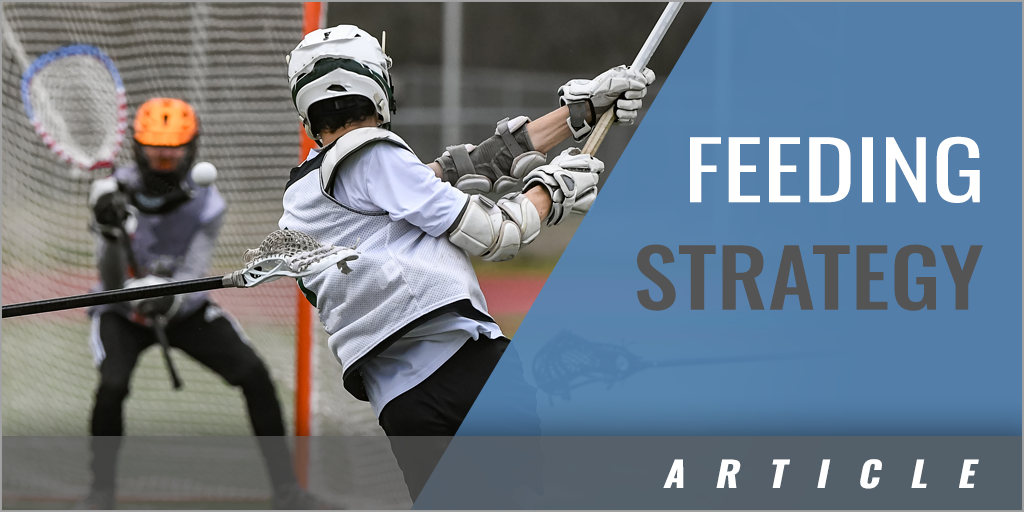|
By: Don Zimmerman and Peter England Originally Published in: Men's Lacrosse Provided by: Human Kinetics Feeding and cutting are opposite sides of the same coin. Feeding and cutting are a two-man game that requires proper timing and field position. Feeders and cutters have to be on the same page and work together to be successful. Feeding and cutting are all about timing. Just like in basketball, if you have the ball and a teammate comes off a screen and is open, then you have to deliver the ball in a timely fashion. If the feed is late, this gives the opponent time to recover and disrupt the play. Remember that you can feed from anywhere on the field. A successful feed can come from anywhere as long as there is a connection between the feeder and the cutter. Feeds can come from out in front of the goal line extended or from behind the goal. Feeds from out top are usually executed during "dodge and dump" maneuvers. You beat your man out top, then you pass off to the next open teammate or to a teammate coming off a down screen near the crease. When the ball is out front, the ball carrier has the ability to shoot, which can cause the defense to stare at the ball and therefore open up off-ball teammates. Out-front feeding is much like the strategy used by the offense in basketball. The area behind the goal is what makes lacrosse a unique field game. Having 15 yards of playing space behind the goal makes feeding a much bigger part of the game. Because a feeder is often behind the goal, the defensive players often have their backs to the players in front of the goal. This opens up the cutting game because it's more difficult for defenders to see the ball and see their man. The feeder's prime feeding area is located behind the goal on either side of the cage but excluding the area directly behind the goal (the X-behind position). The X-behind position is located at the apex of the goal. You can feed from the X-behind position, but it's not an ideal spot. The goalie has a good chance to intercept or knock down a feed that comes from this position. If you have the ball behind the goal, you are solely a feeder because you can't score until you come up above the GLE. Once you cross the GLE, you become a threat to feed or score. Feeding can be part of a set play, or it can be a freelance move performed to take advantage of a defensive lapse in coverage. Set-Play Feeding Teams will often have set offensive plays where the feeder has the ball and a cutter cuts to a certain position expecting the ball. The feeder is analogous to the quarterback, and the cutter is the pass receiver. On a set play, the quarterback doesn't wait for the receiver to finish his route before throwing the ball. The quarterback might throw the ball to a spot before the receiver even makes his cut to the sideline. The receiver doesn't wait until the ball is thrown before he makes his cuts. The receiver runs his down-and-out pattern and gets in the general area where he wants to receive the ball. When the quarterback releases the football, the receiver has to make an adjustment to the pass. In lacrosse, sometimes the cutter cuts before the ball leaves the feeder's stick, and the cutter tries to get to a predetermined area in anticipation of the feed. Freelance Feeding In a freelance situation, the cutter reads the feeder, makes a connection with the feeder, and cuts to an open area. In football, the set play sometimes breaks down, and the quarterback scrambles away from the defense. When the quarterback scrambles, pass receivers are taught to come back to the ball and shorten the pass. The pass receivers read the quarterback, make a connection, and make adjustments by finding the open area in the defensive coverage. In lacrosse, sometimes the cutter doesn't cut until the feeder looks at him. When the feeder's stick is in position and his hands are free, then the cutter bursts to the ball. The cutter must anticipate and wait until the ball leaves the feeder's stick before committing to a certain cut - then he must go get the ball. |







